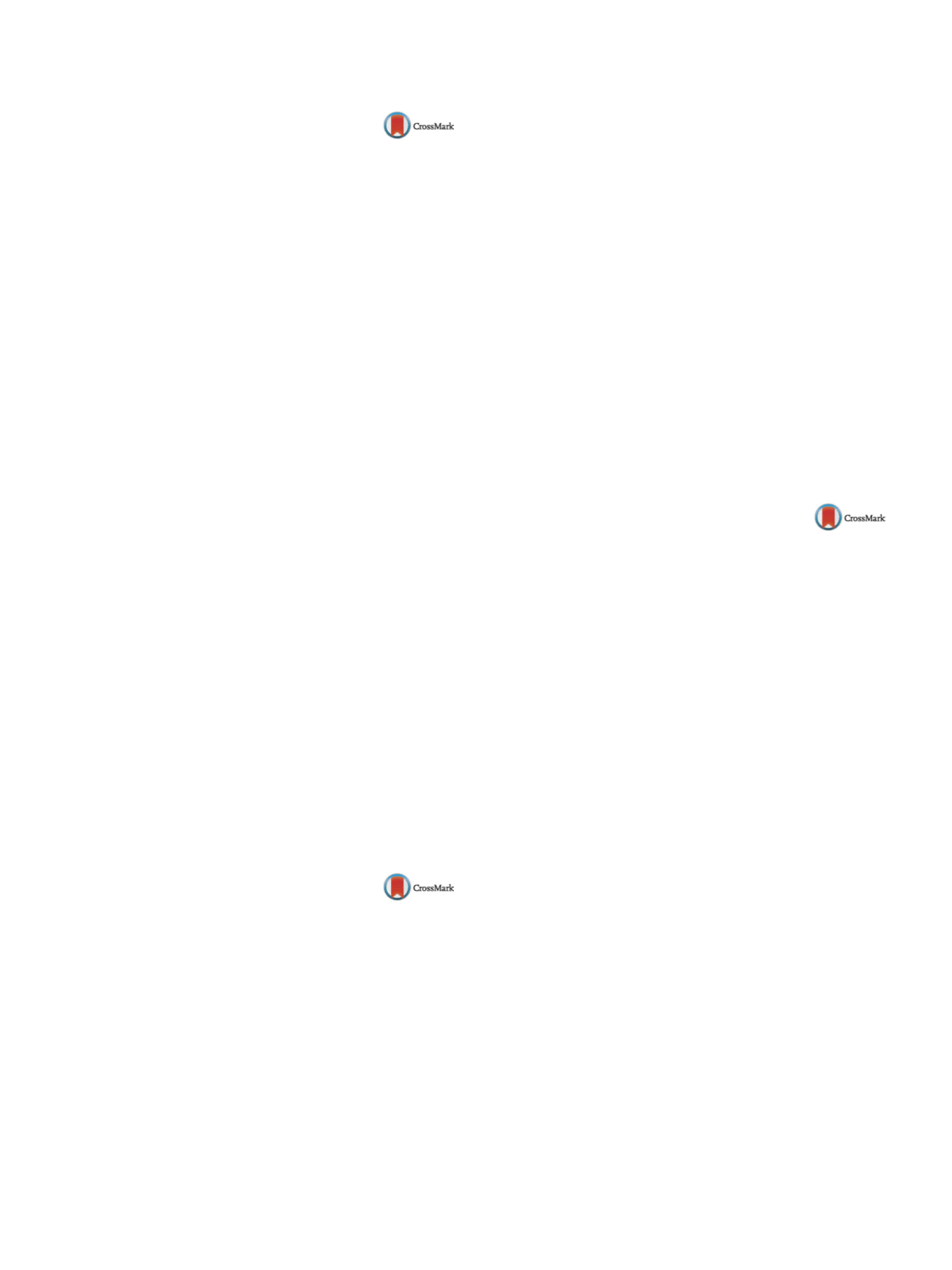

S212
25th European Congress of Psychiatry / European Psychiatry 41S (2017) S170–S237
EW0311
Evaluation of cognitive dysfunction in
a sample of patients affected by
bipolar disorder
E. Stella
1, M. La Montagna
1 ,∗
, L. Borraccino
1, F. Ricci
1,
A.I. Triggiani
2, F. Panza
3, D. Seripa
3, G. Miscio
3, A. Bellomo
1,
M. Lozupone
11
University of Foggia, Psychiatric Unit, SPDC, Department of Mental
Health Asl Fg, Foggia, Italy
2
Laboratory of Physiology, University of Foggia, Department of
Clinical and Experimental Medicine, Foggia, Italy
3
IRCCS Casa Sollievo della Sofferenza, Department of Medical
Sciences, San Giovanni Rotondo, Italy
∗
Corresponding author.
Introduction
Cognitive dysfunctions concerning working mem-
ory, attention, psychomotor speed, and verbal memory are a
disabling feature of the bipolar disorder (BD). According to scientific
literature, cognitive disturbances are present not only in depres-
sive and manic phases of BD, but also during the euthymic period,
without regard to whether or not drugs are assumed.
Objective
To determine the presence of one or more dysfunctions
in cognitive domains in a sample of subjects suffering from BD, in
euthymic phase, compared with healthy controls.
Aims
Evaluation of the following cognitive performances in sub-
jects affected by BD: speed of processing, attention/vigilance,
working memory, verbal learning, visual learning, reasoning and
problem solving, and social cognition.
Methods
Forty-six patients affected by BD in the euthymic phase
(mean age: 43.17 years old; 39.13% male), and 58 healthy con-
trols (mean age: 39.21 years old; 51.72% male) were enrolled in the
psychiatric unit of Azienda Sanitaria Locale, Foggia. The neuropsy-
chological battery MATRICS Consensus Cognitive Battery (MCCB)
was administered by trained psychiatrists.
Results
We found the presence of cognitive impairment, affecting
six out of seven of cognitive functions assessed (
P
< 0.001): speed of
processing, attention/vigilance, working memory, verbal learning,
visual learning, reasoning and problem solving.
Conclusions
These preliminary results from our case-control
study show that cognitive deficits are clearly present also during
the euthymic phases of subjects with bipolar disorder (mainly per-
taining attention/vigilance domain). These cognitive abnormalities
may represent a biomarker of bipolar disorder.
Disclosure of interest
The authors have not supplied their decla-
ration of competing interest.
http://dx.doi.org/10.1016/j.eurpsy.2017.01.2181EW0312
Patterns of impairment in executive
functions within unipolar and bipolar
depression
B. Suciu
1 ,∗
, R. Paunescu
2, I. Miclutia
21
Children’s Emergency Hospital, Psychiatry Clinic, Cluj-Napoca,
Romania
2
Iuliu Hatieganu University of Medicine and Pharmacy, Department
of Neurosciences, Cluj-Napoca, Romania
∗
Corresponding author.
Introduction
The majority of studies revealed that cognitive
deficits are an important aspect in many psychiatric illnesses, such
as bipolar disorder and major depressive disorder. In the past, cog-
nitive impairment was considered part of depression and it was
expected to diminish as other mood symptoms improved with
treatment.
Method
This study is based on the review of recent literature,
performed in order to understand the dimension of executive
impairment in unipolar and bipolar depression.
Results
Both unipolar and bipolar depressed patients display
cognitive deficits in several cognitive domains within executive
functions. Different subcomponents of executive functions are
altered in both types of patients, but impairments in sustained
attention appear specific in bipolar depression while dysfunctional
divided attention is reported in unipolar disorder. Studies describe
deficits in planning strategies and monitoring processes that are
characteristically impaired in unipolar depressed patients. Also
these subjects tend to make more perseverative responses sug-
gesting set shifting deficits and moreover they require longer time
and more cognitive effort in order to accomplish tasks involving
inhibitory control or cognitive flexibility. Other findings suggest
that bipolar I depressed patients perform worse than bipolar II
depressed patients and unipolar depressed patients across all exec-
utive functions especially in the decision making process that is
considered to be a trait marker for bipolar disorder with no differ-
ences between the two types of bipolar subjects.
Conclusions
Executive functions represent a term that includes a
higher order of cognitive abilities with deficits that are present in
bothdisorders but display slightly different patterns of impairment.
Disclosure of interest
The authors have not supplied their decla-
ration of competing interest.
http://dx.doi.org/10.1016/j.eurpsy.2017.01.2182EW0313
Objective quantification of
psychomotor dynamics during
pharmacological treatment of bipolar
depression
P. Terziivanova
∗
, S. Haralanov , E. Haralanova , G. Dzhupanov
Medical University, Psychiatry and Medical Psychology, Sofia,
Bulgaria
∗
Corresponding author.
Introduction
Psychomotor disturbances are among the core
symptoms of endogenous depression. They reflect the underly-
ing pathophysiology of the depressive episode and are sensitive to
the neurobiological effects of its pharmacological treatment. Being
objectively manifested, the psychomotor functions and dysfunc-
tions are technically recordable and measurable by the available
motion analysis systems.
Aims
To objectively record and measure the psychomotor
dysfunctions in bipolar depression and their dynamics during phar-
macological treatment.
Methods
We introduced an original (internationally patented)
equilibriometricmethod for objective and quantitative recording of
psychomotor dysfunctions during stepping locomotion in 37 hos-
pitalized patients with bipolar depression and 30 well-matched
healthy controls. Two separable psychomotor functions were ana-
lyzed in parallel: conscious (voluntary) activity and subconscious
(automatic) reactivity. Both patients and controls were examined
twice in order to quantify their psychomotor dynamics. Patients
were examined at the first day of their hospitalisation and the day
before their discharge. The two consecutive examinations of the
controls were with equivalent time intervals.
Results
There was no significant psychomotor dynamics
(
P
> 0.05) in the healthy controls between their first and second
equilibriometric recording. Psychomotor activity and/or reactivity
of the patients were relatively slower at their first recording and
significantly accelerated (
P
< 0.05) at their second recording after
effective pharmacological treatment.
Conclusions
Objective recording and quantitative assessment of
psychomotor dynamics in patients with bipolar depression during
the pharmacological treatment of their current episode could be
a sensitive measure of their improvement and might be used as
a surrogate pharmacodynamic biomarker for objective treatment
monitoring.


















